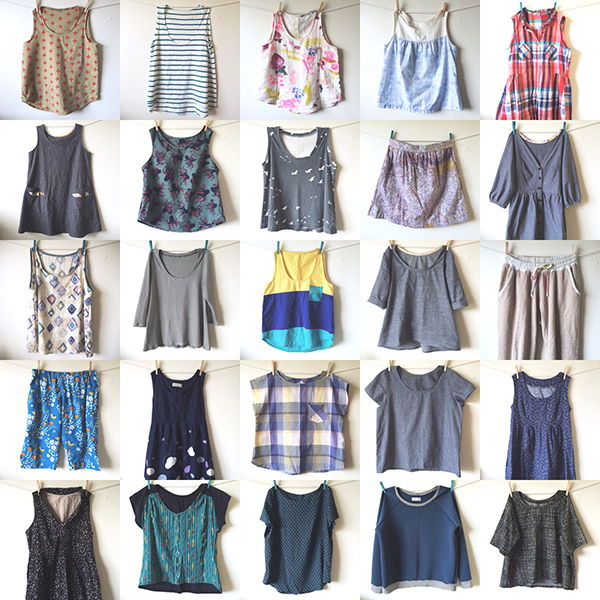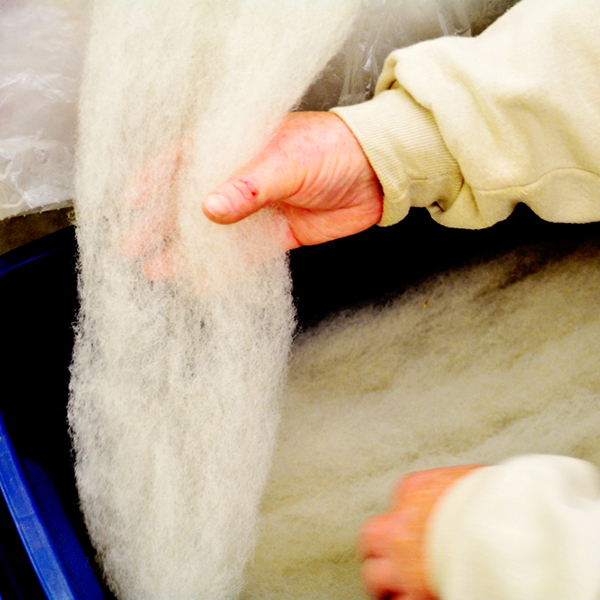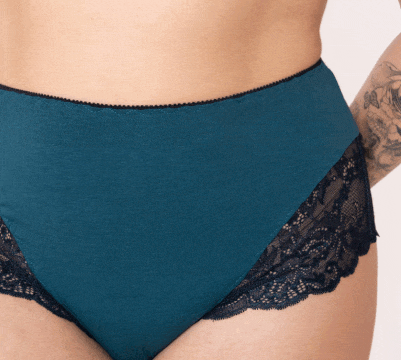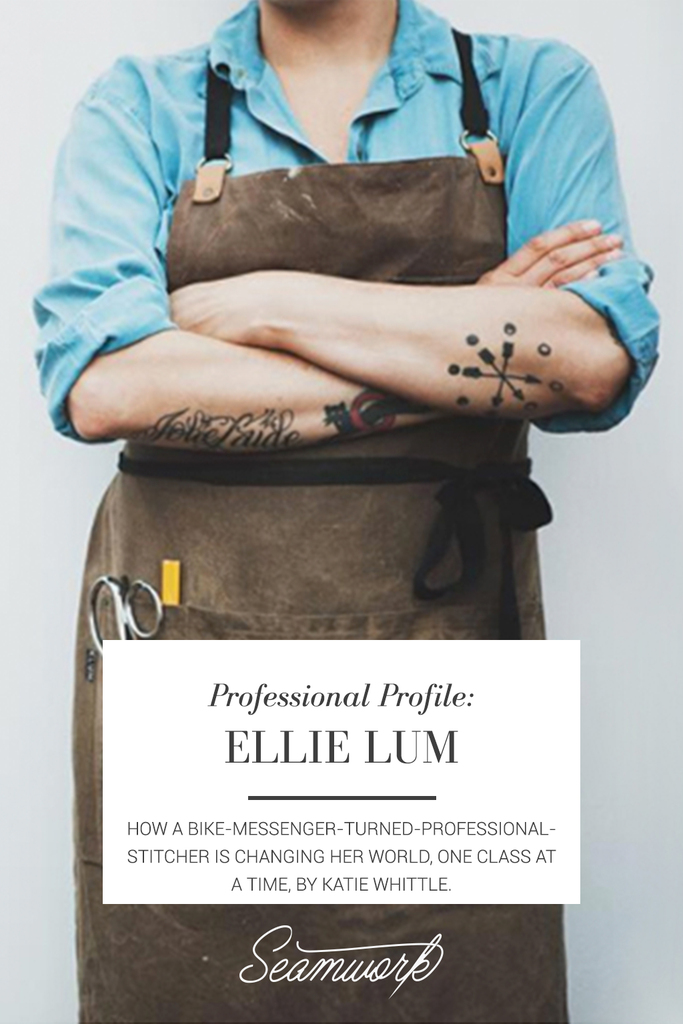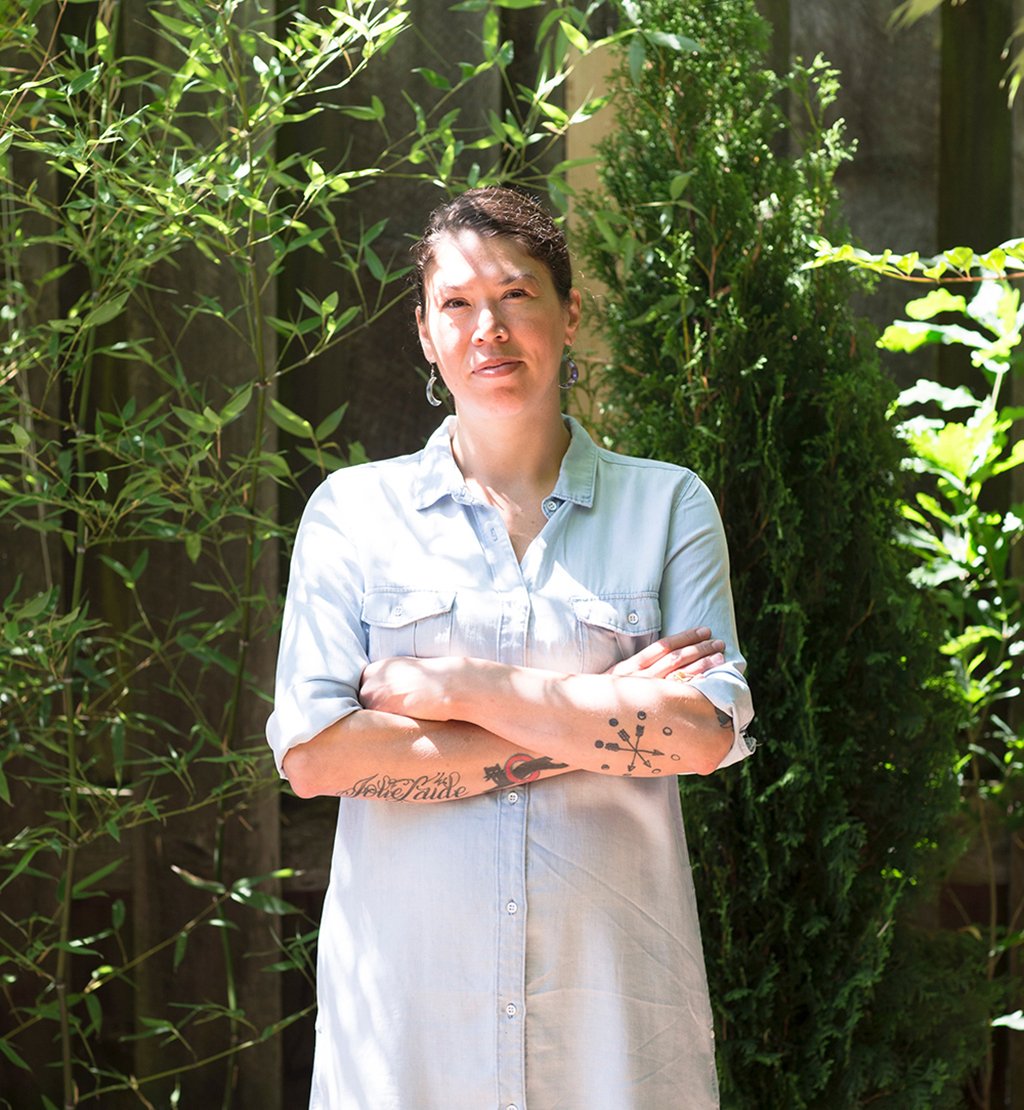
When Ellie Lum moves to your town, the place changes just because she lives there. She builds things that are bigger than her that leave a lasting impact. Her energy, enthusiasm, and confidence is infectious, and she refuses to accept that anything is impossible. When talking to Ellie, you can't help but think that sewing can change the world.
Together with her husband, Dustin, Ellie founded Klum House, a modest home in Portland, Oregon, that encompasses their personal studios, a sewing classroom, a wood shop, and Dustin’s tattoo studio—plus, a bit of home for themselves and their little wonder dog, Winston.
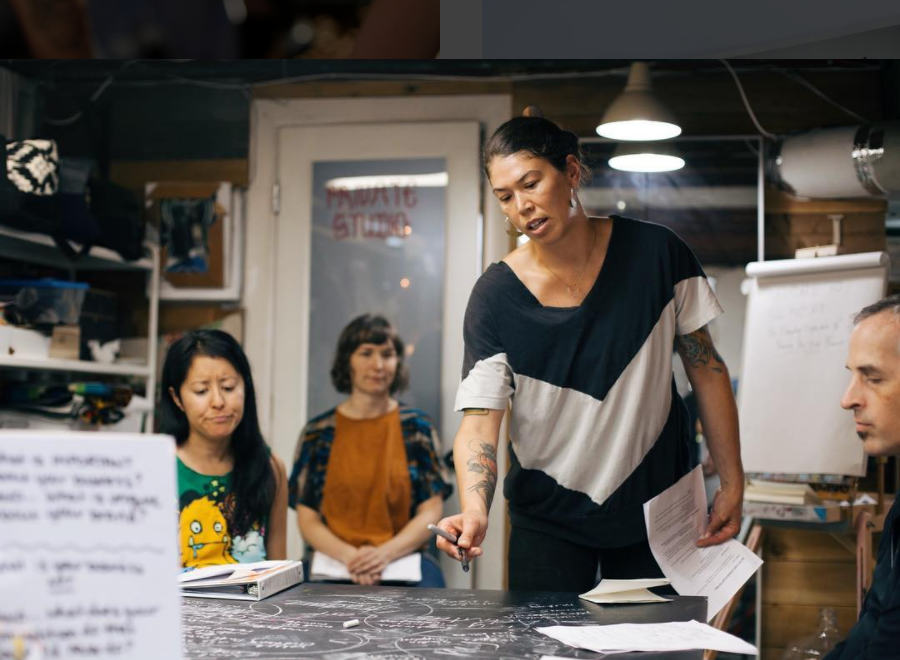
At Klum House, Ellie offers DIY, skill-building classes in textile arts and creative business. Ellie specializes in teaching rugged and utilitarian sewing techniques to novice sewers, helping them master the sewing machine as a versatile tool. But, Ellie isn’t just helping others learn new sewing skills, she’s creating a social movement.
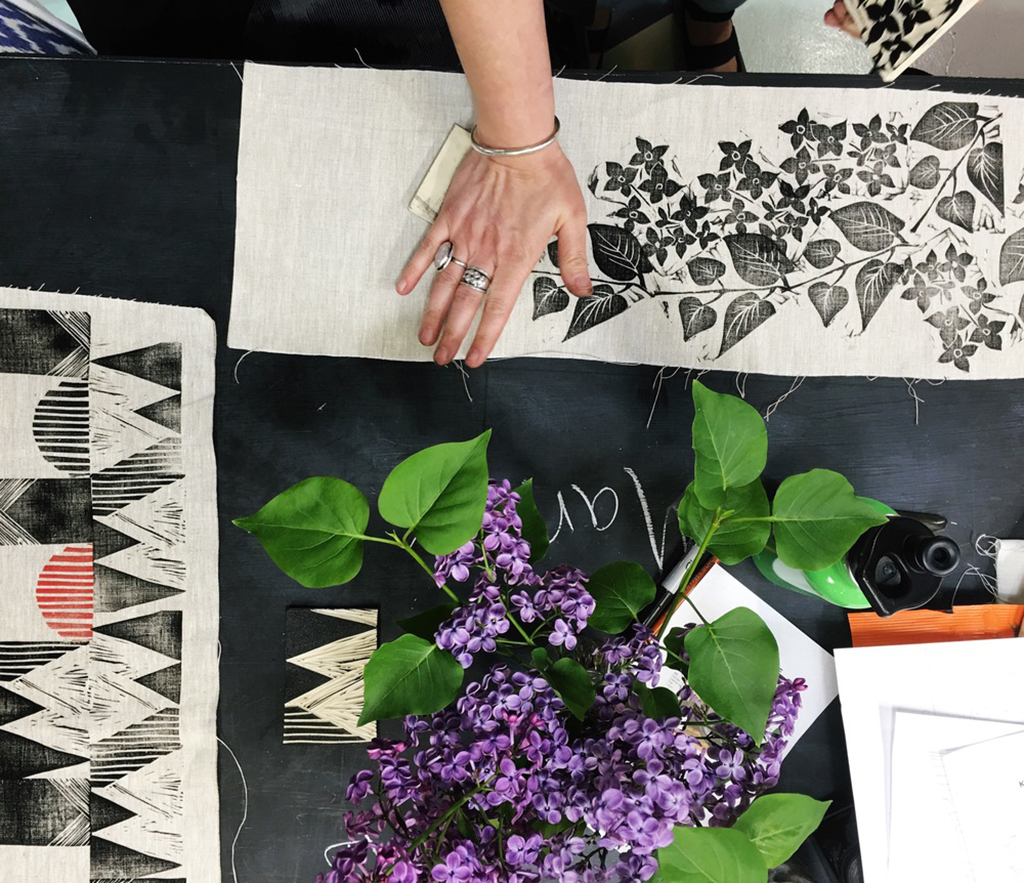
In 1998, Ellie co-founded R.E.Load Bags, a custom messenger bag company, which set the standard for many other companies that make custom bags. Over the years, she fell in love with teaching industrial sewing through training folks to make bags for R.E.Load. Ellie saw how those skills opened up a trainee's creative potential and formed a foundation that could be continually built on.
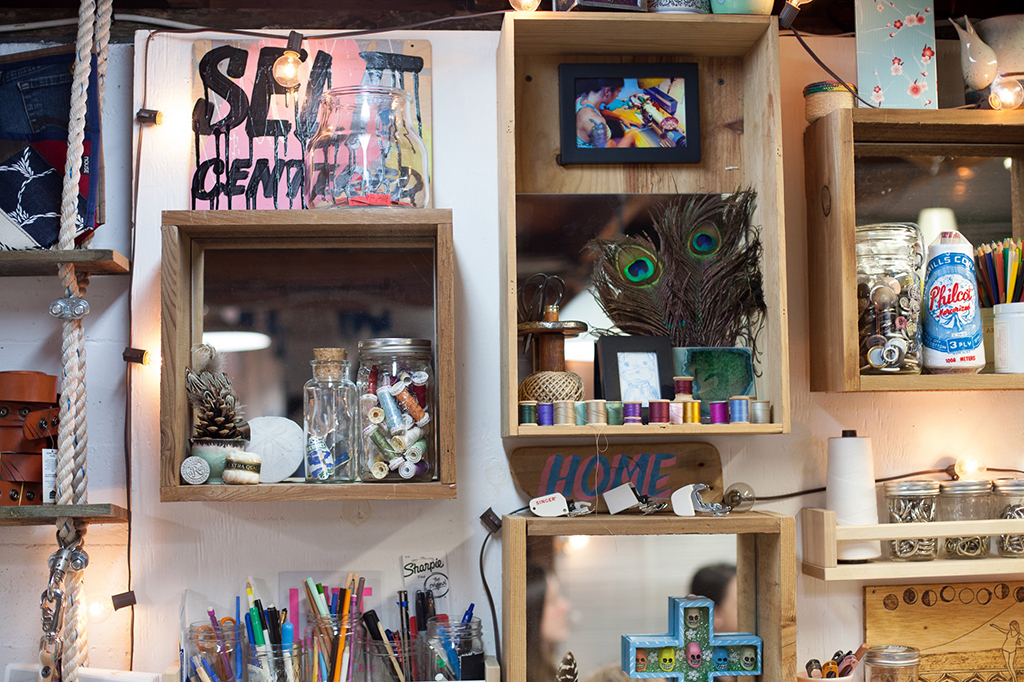
This experience motivated Ellie to study education theory at UC Berkeley. She was particularly interested in researching the emotional and physical impact of working with one's hands, and how to best learn with your body in a natural setting. Her interest in this research was always motivated by the idea of opening Klum House in the future. Ellie wanted there to be a lot of intention behind how she taught. She also wanted to impact her students' personal development and belief in themselves.
"In modern society people aren't used to interacting with products that are not in the finished state. We are losing our sense of power to make things happen, because we don't see the process. It contributes to low self-esteem and low self-confidence in your ability to make things happen in the world," Ellie explains. "If someone can make something with their hands, in a few hours, they see their ability to change things and make things. It builds self-confidence."
In Ellie’s classes, students install a Klum House label in every item they make. It's important to Ellie that the students see that they made a product, not just a bag. By teaching what goes into creating something yourself, she is informing customers and enabling makers to sell their products at the price point they need to sustain their business.
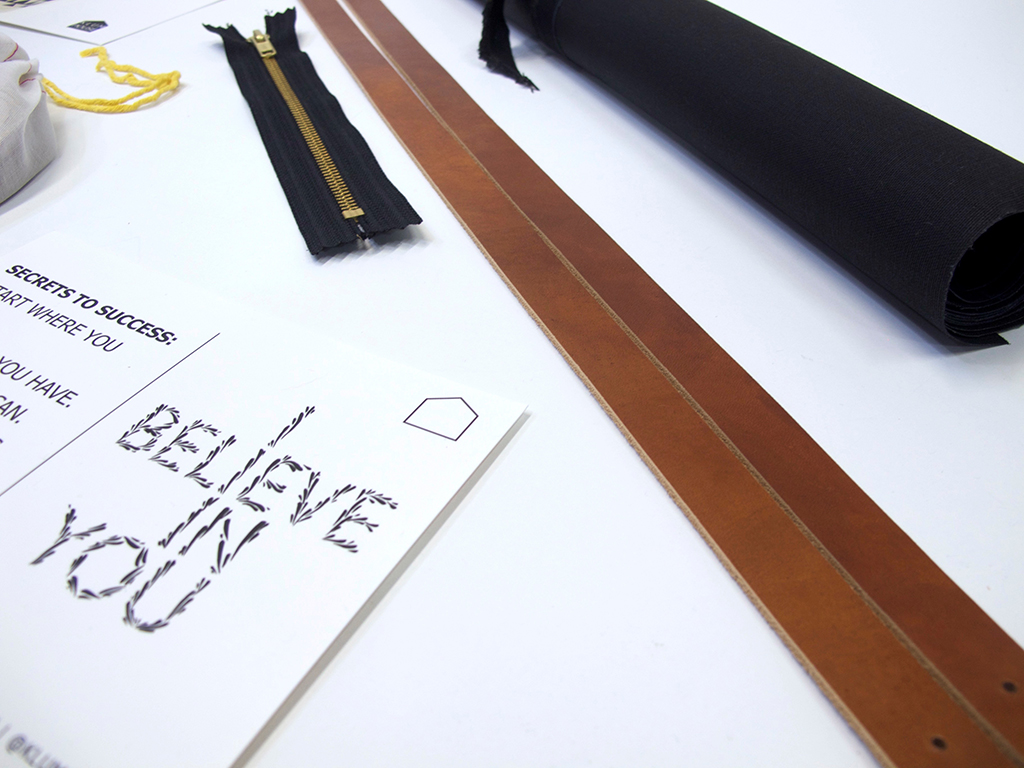
Ellie offers a "make it or buy it" option for her customers; either they can take a class and make something themselves or buy the exact bag, already sewn up. Ellie has also begun releasing Klum House patterns and Maker Kits for her bags, which come already cut and marked, in order for stitchers to concentrate on learning sewing skills, rather than fussing with cutting. She is determined to change the way people perceive the value of handmade items, in order support the growth of an alternative economy.
To enact social change, Ellie is combining powers with various arts and crafts organizations in the city, to fold her interest in social justice and activism into Klum House. She is starting a conversation about how to serve the needs of everyone, not just a select few, asking questions like: How can sewing be more accessible? How can we provide skill training to help others find jobs in the industry and support themselves?
Ellie has always exceeded expectations, but she's never surprised by her ability to make things happen. For Ellie, it’s always been that way; it stands in such stark contrast to what the norm is, and it’s obvious that it is normal to her. She believes that there is a lot of work to do in the world, and this utilitarian self-confidence keeps her from creating further obstacles for herself.
“It’s plainly more efficient for me to not second guess myself. I don't want to waste my time navel-gazing and thinking I can’t do it. Most of the reasons why people can't do something is because they don't actively have the resources, skills, or understanding to do something. Everyone has a unique creative ability, but it takes a while to find it.”
Ellie’s Favorite Tools
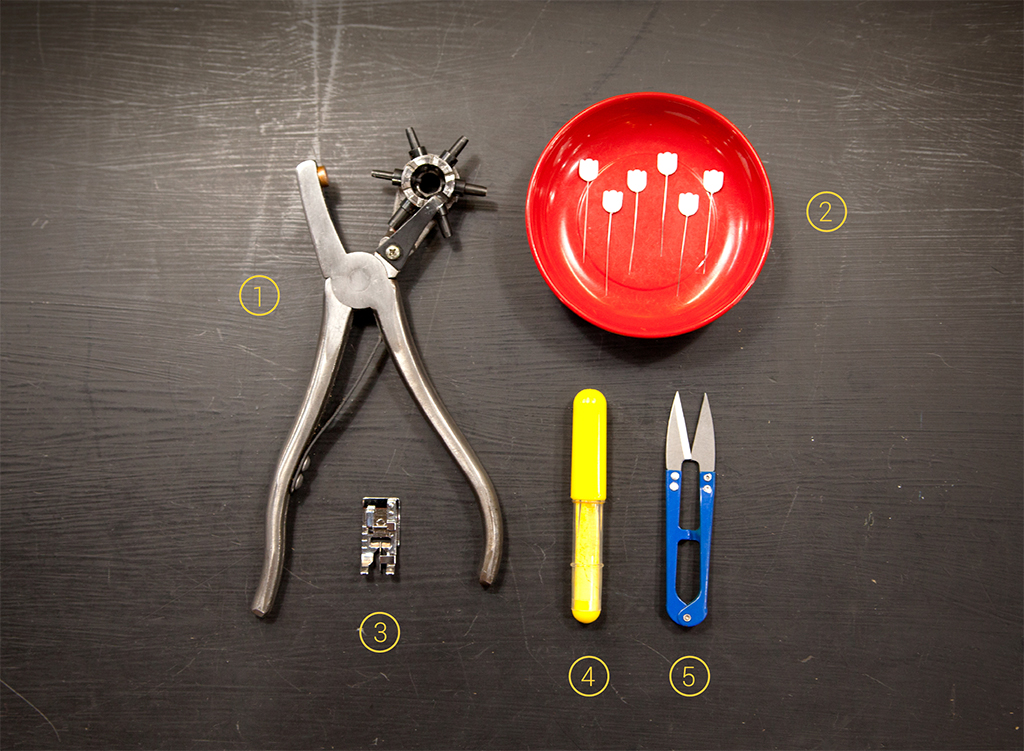
1 | Rotating Hole Punch
Ellie uses this tool to punch holes into leather and waxed canvas for rivet installation. The hole sizes are adjustable and the tool is only around $20 at home improvement stores.
2 | Tulip Pins
“They are going to change your sewing life, I kid you not,” says Ellie. She uses these pins on waxed canvas, and anything else she sews with. They are flexible, sharp, and stay sharp. They are pricey, but worth the investment because they won’t damage your fabric.
3 | Edgestitch foot
If you don’t have one, get one now. These puppies help create perfectly straight topstitching and edgestitching.
4 | Chaco Liner Pen
These chalk markers don’t drag when marking, never need to be sharpened, and their markings are always precise and easy to remove.
5 | Thread Snips
These high-quality metal scissors are perfect for making quick snips at the industrial sewing machine.
Installing leather straps with rivets
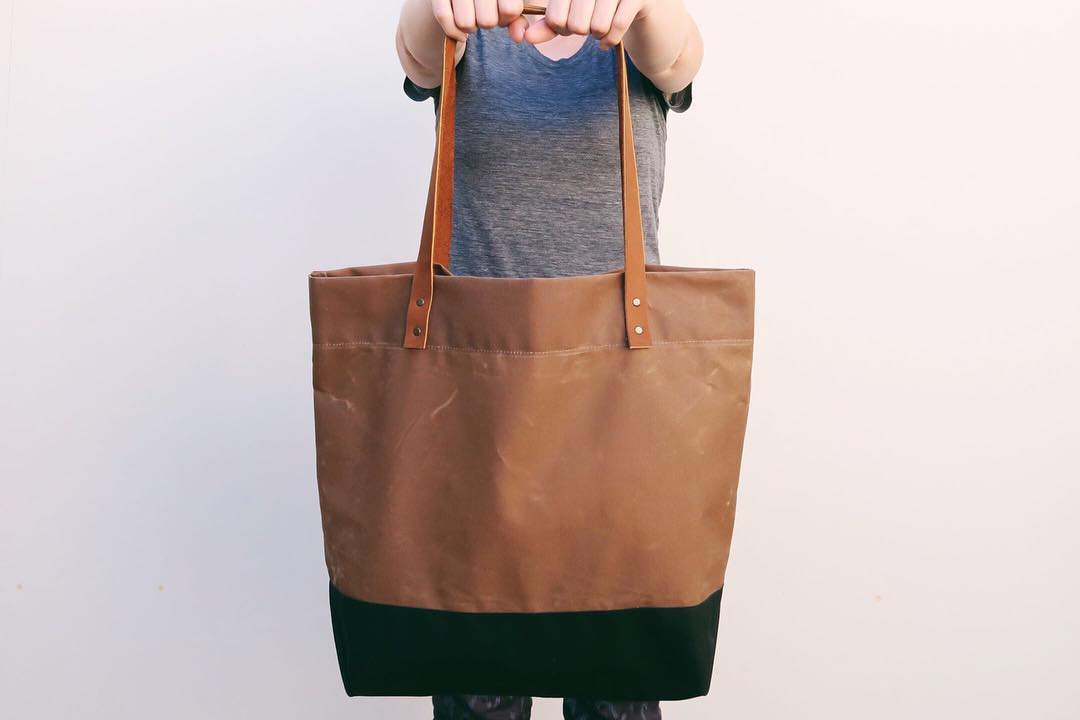
The Klumhouse Portsman Tote
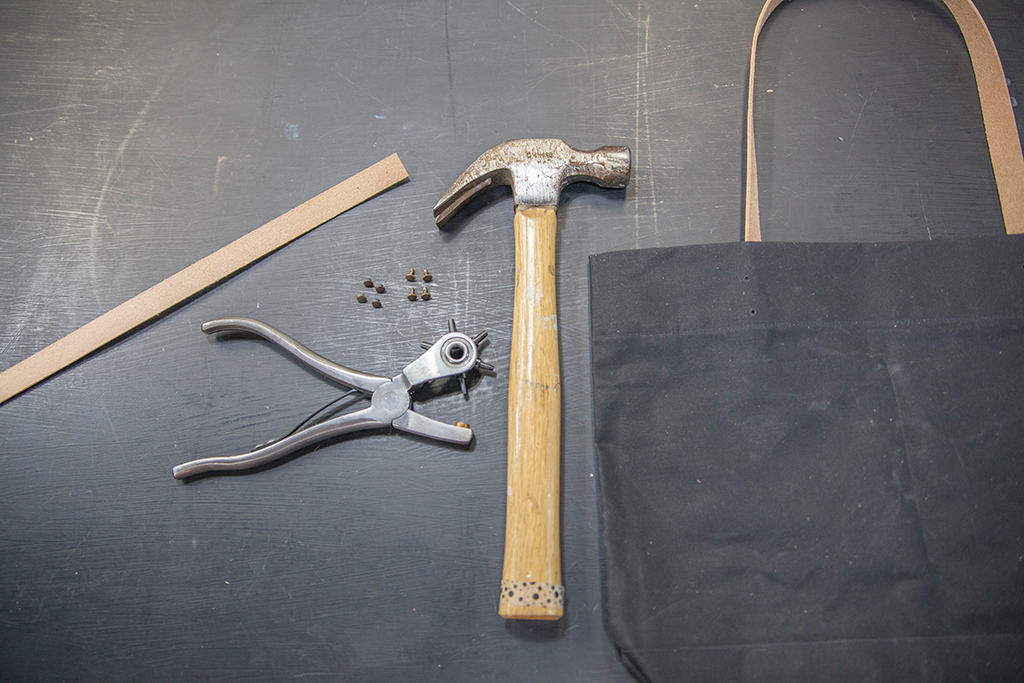
You'll Need
- Leather strapping
- Hammer
- Two pairs of quick-set metal brads
- Leather hole punch
Step 1
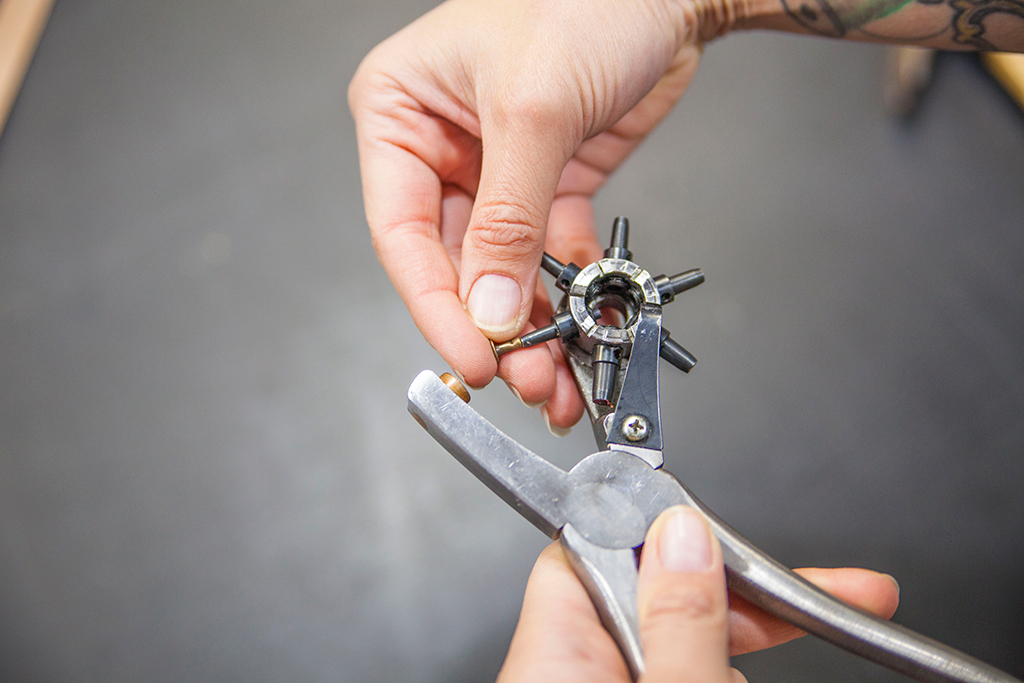
Select the hole size that matches the circumference of the rivet’s post.
Step 2
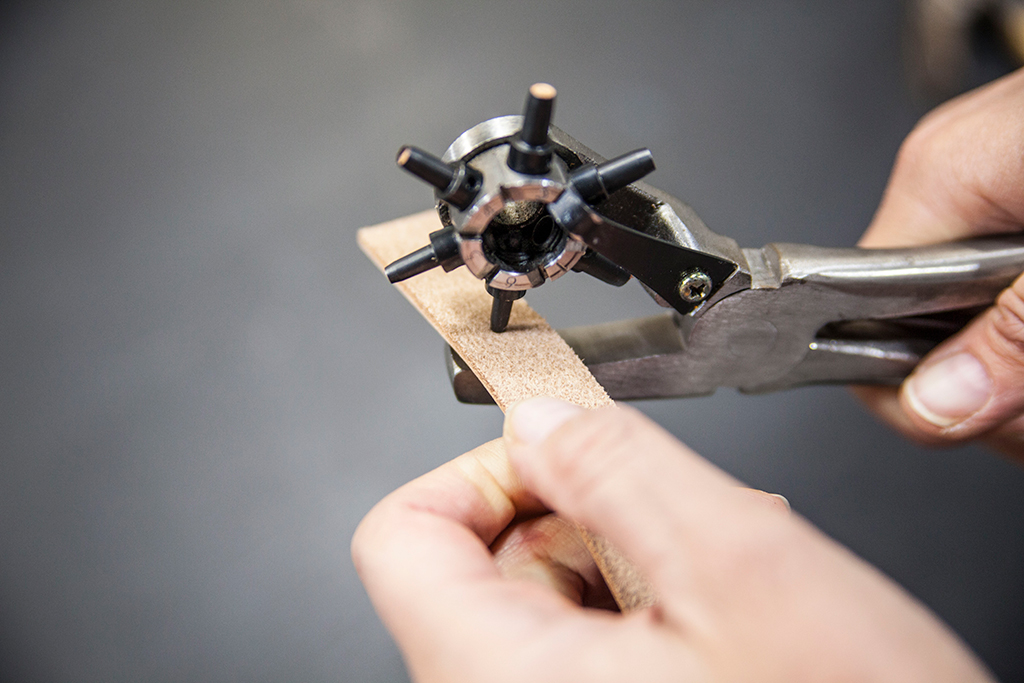
Determine rivet placements and bring the leather strapping under the hole punch. Hold the leather in place with your dominant hand.
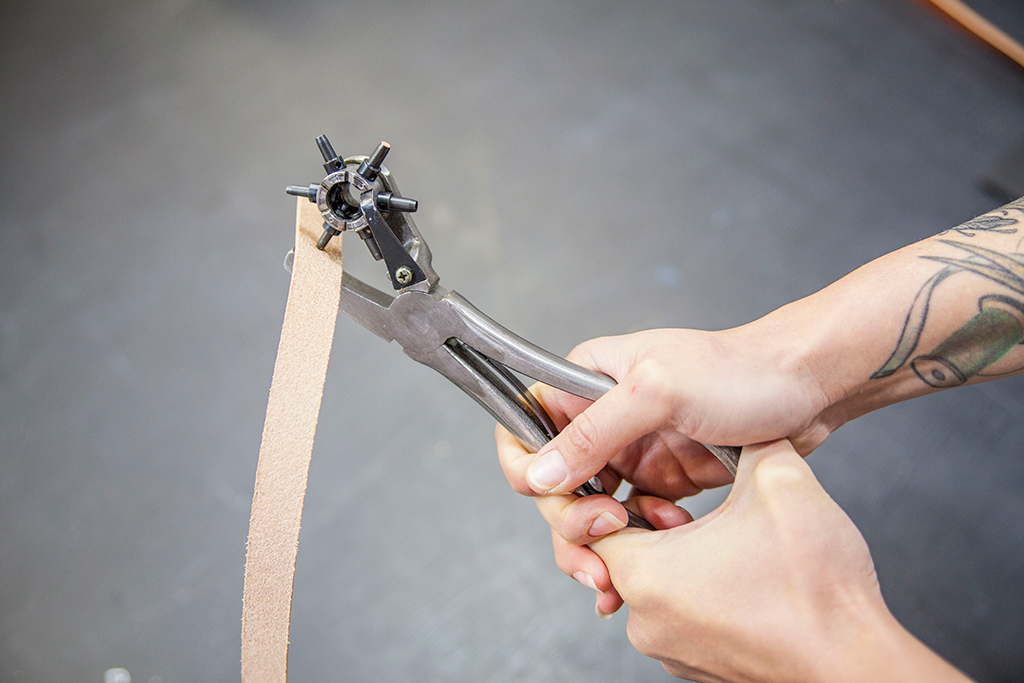
Once the hole punch and the leather are aligned, bring both hands to the punch’s handles, and “squeeze until you hear the crunch.”
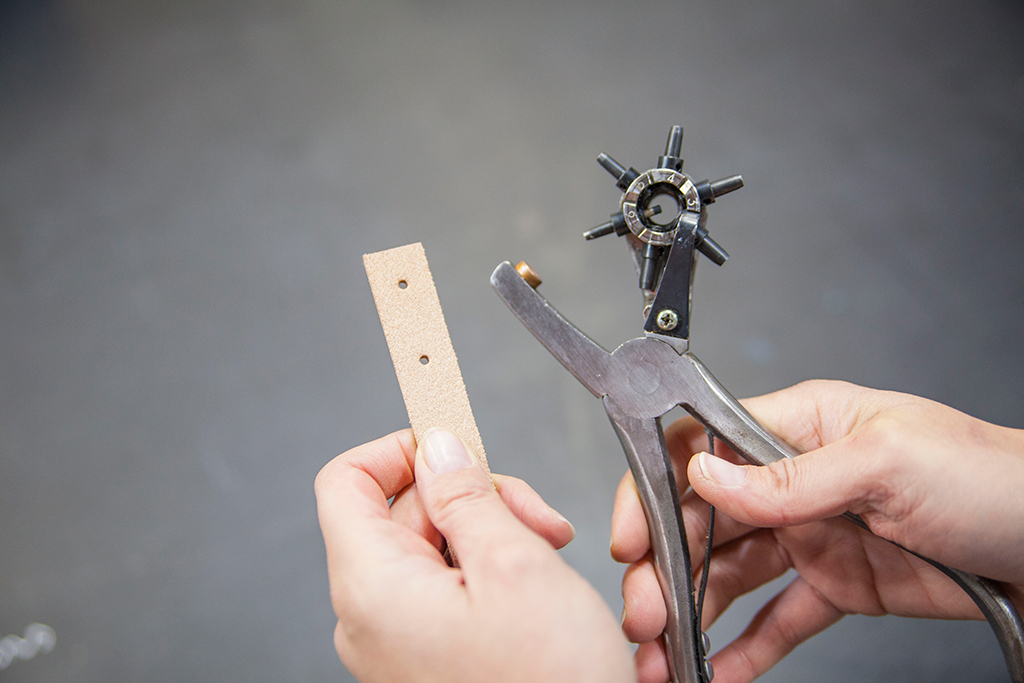
Repeat this step for the additional rivet placement markings on the leather and fabric.
Step 3
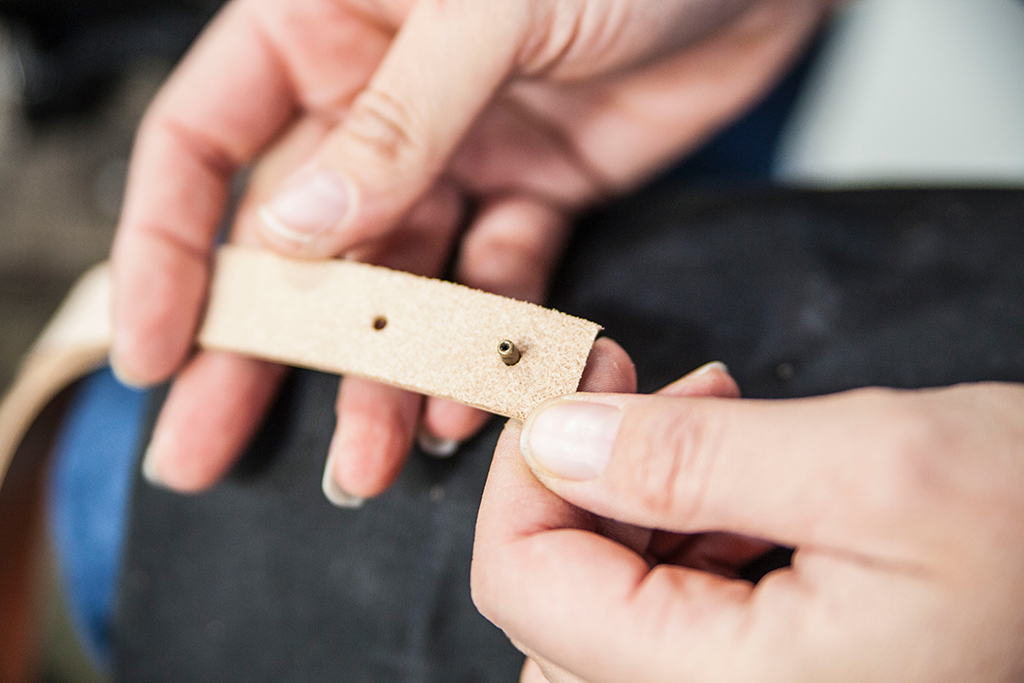
From the right side of the leather strapping, insert the rivet’s post into the punched hole.
Step 4
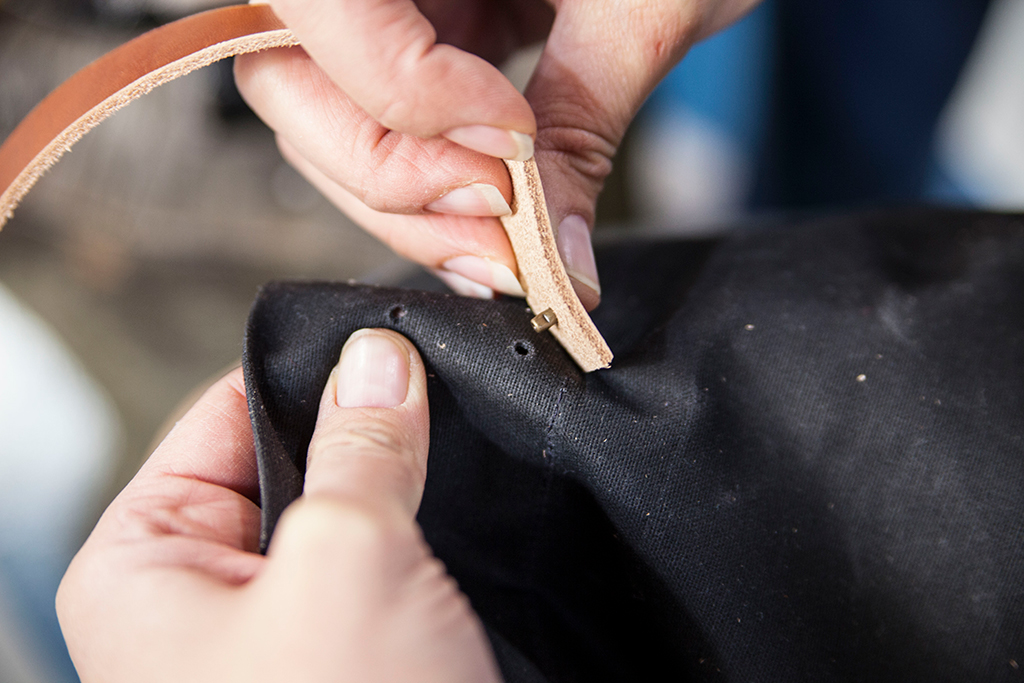
Align the post with the exterior fabric’s punched hole. Push the post through the outer fabric, through to the wrong side (inside) of your bag.
Step 5
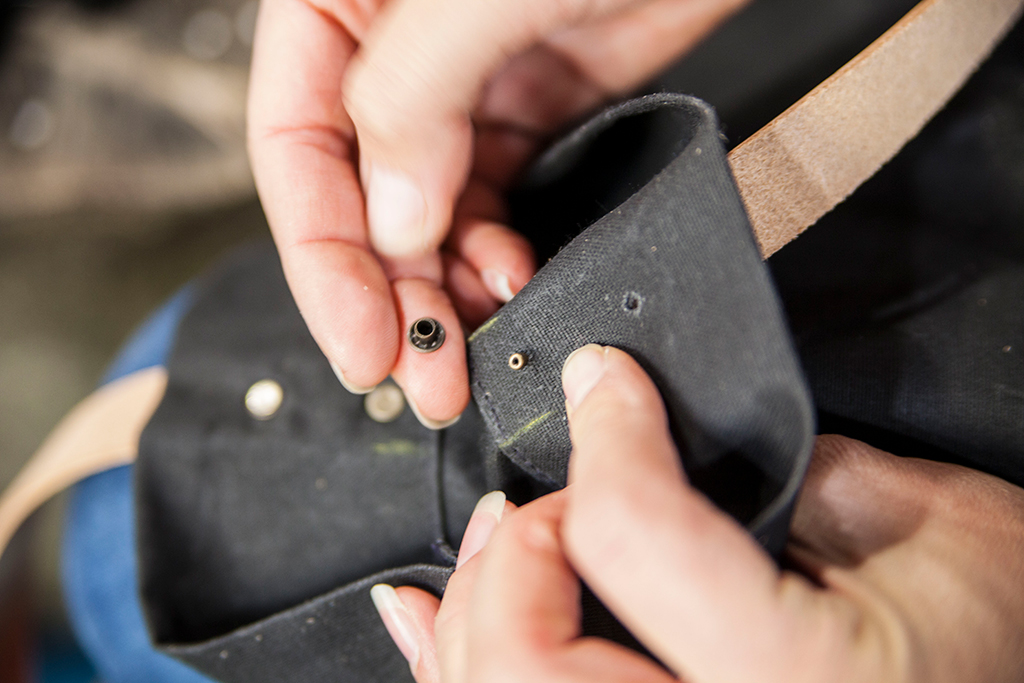
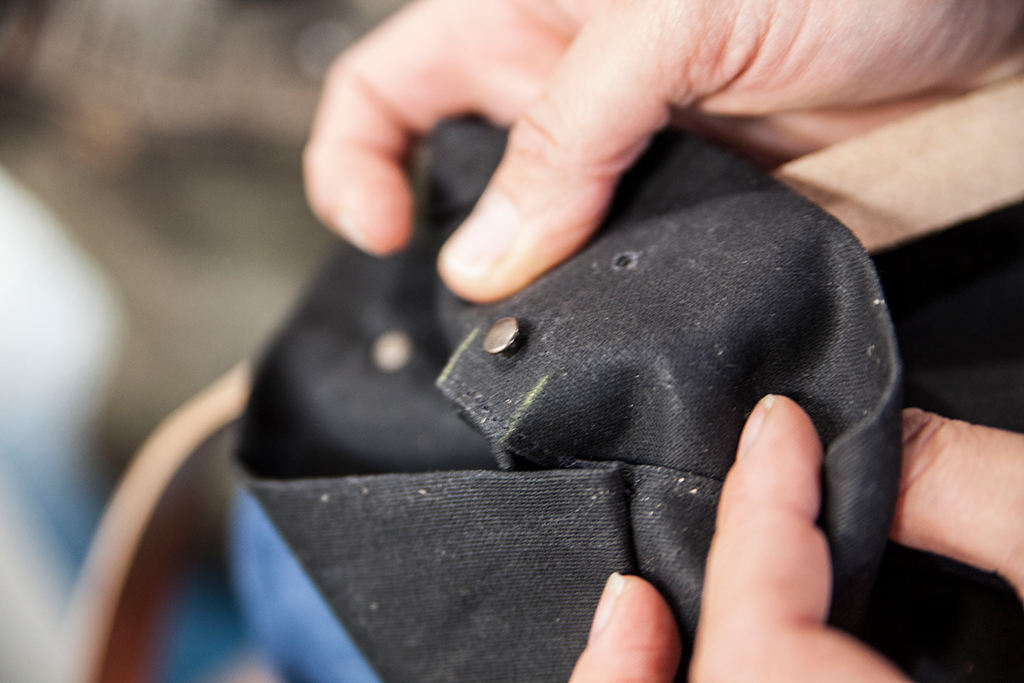
From the inside of the bag, insert the rivet post into the rivet cap.
Step 6
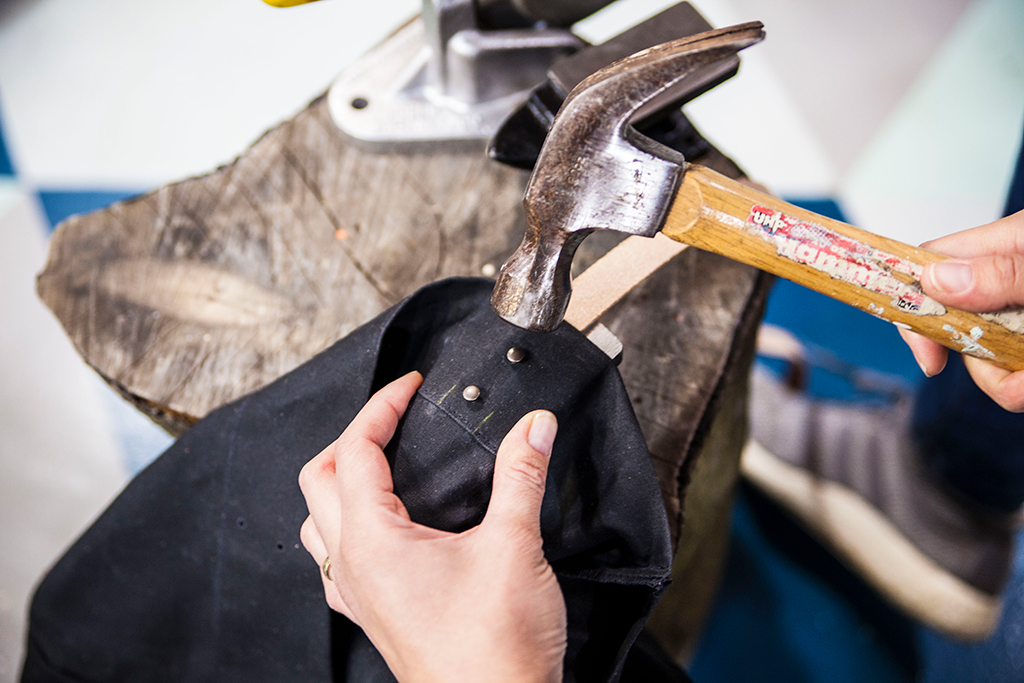
Lay the rivet-bag-strapping sandwich strap down, on a hard surface. Ellie uses a tree stump and mini anvil, for this step.
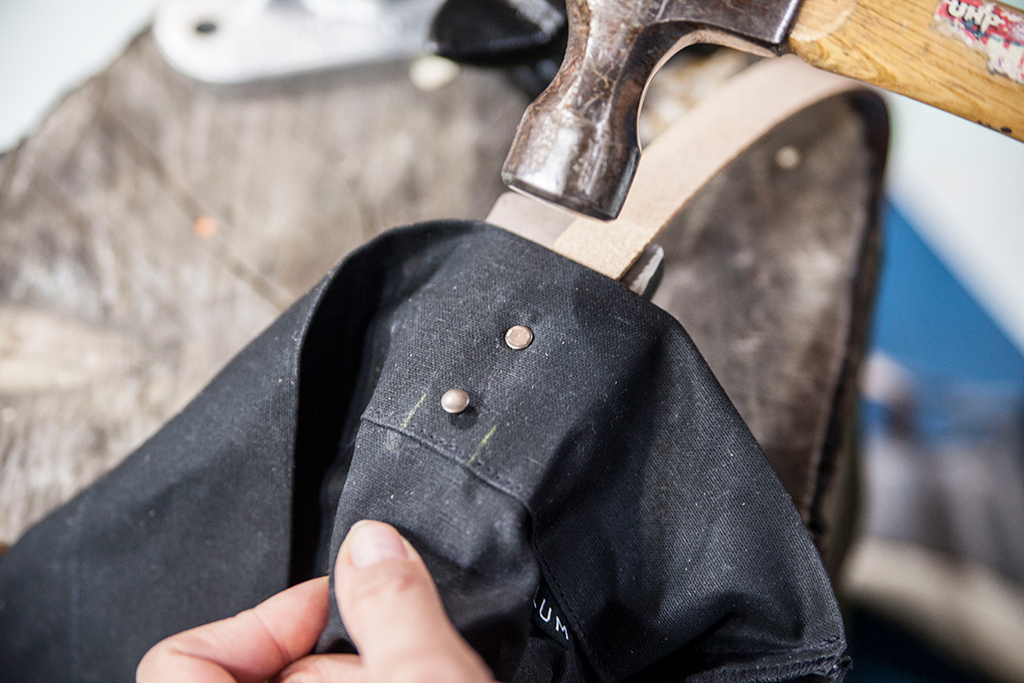
Permanently set the rivet by hammering the rivet cap in place a few times, with a regular hammer.
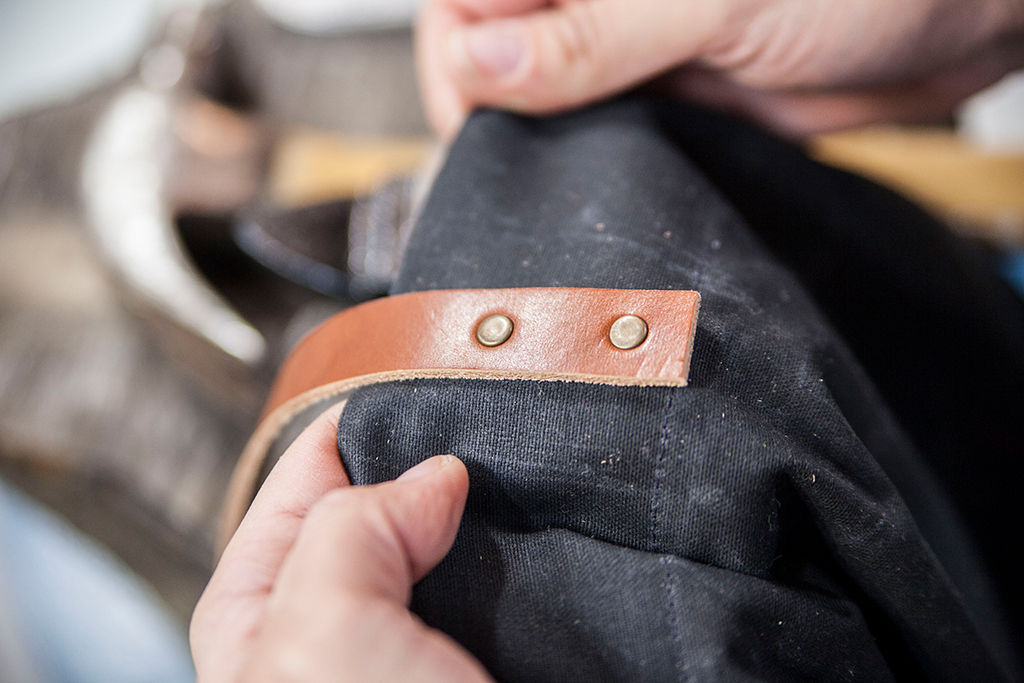
A correctly installed rivet will have a slight divot into the leather from the right side.

